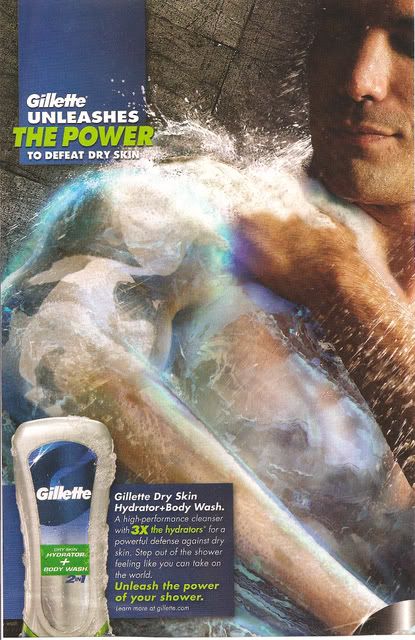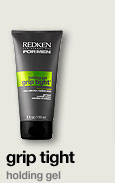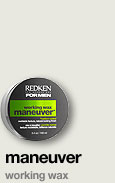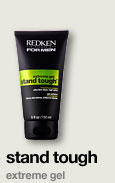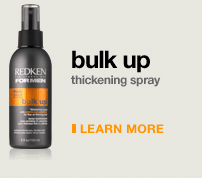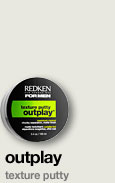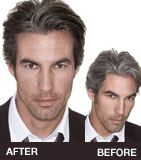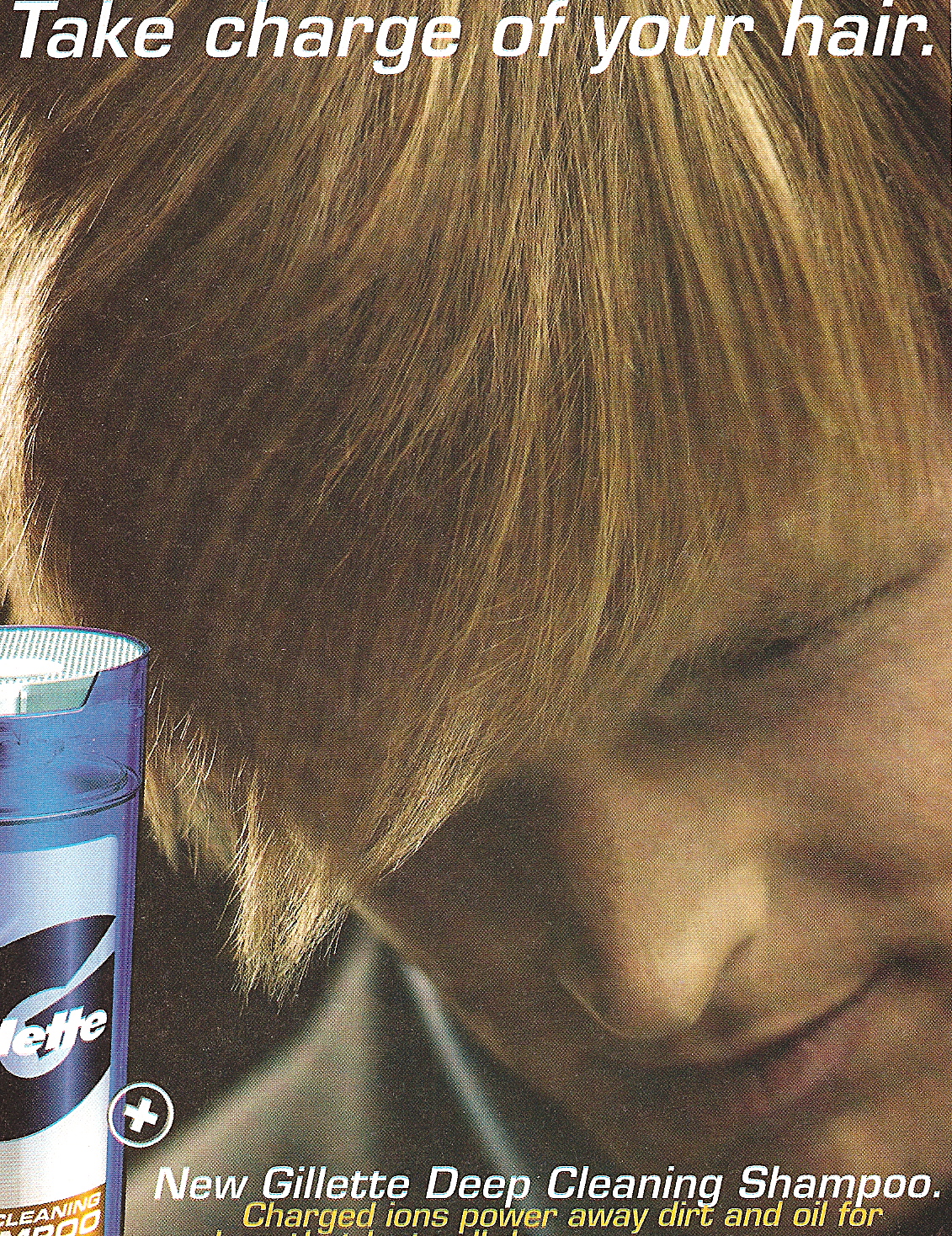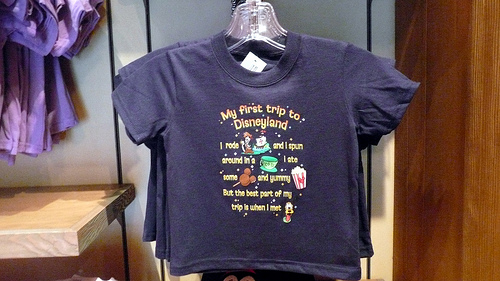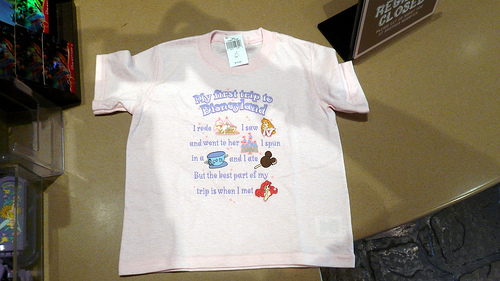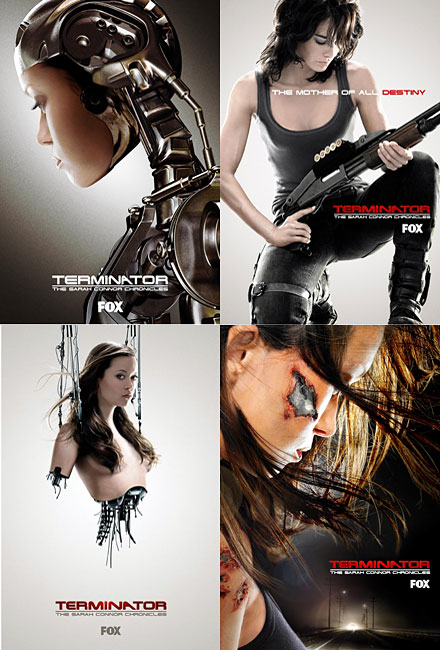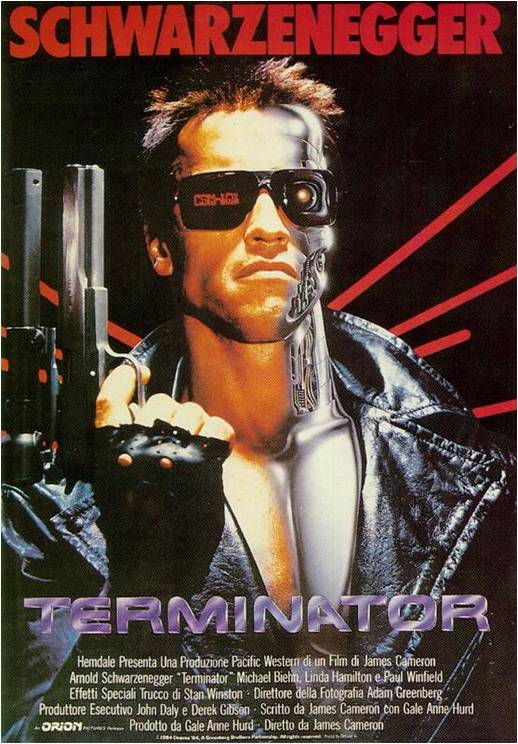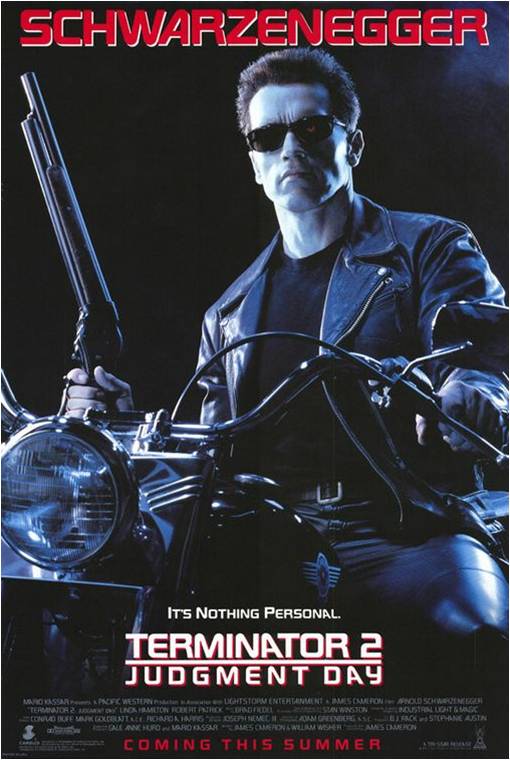Thanks to Daniel G. for sending this in!
gender: masculinity
In a recent post I discussed ways in which companies market beauty products to men, who traditionally aren’t supposed to worry about things like their pores. Here are a couple more examples.
Axe has a body scrubber for men (pointed out by akamarkman):
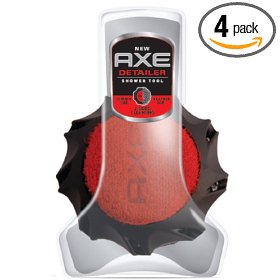
To differentiate it from girly body scrubbers, it’s called the Axe Detailer Shower ToolAxe Shower Scrub (or body wash, if you’re female) comes in varieties including Snake Peel, Skin Contact, and Glacier Water (scroll a little less than halfway down to see the varieties).
Here is an ad for the Detailer Shower Tool that shows a man being treated like a car in a car wash (cleaned by futuristically-attired women):
Gillette 2-in-1 Body Wash helps men prevent skin dehydration. And that helps them get hot girls at work:
This Gillette ad tells men to unleash “power” to “defeat dry skin:
Notice how buff he is. We also learn that this body wash is a “hydrator” (not a moisturizer) and that it’s “high-performance” to provde a “powerful defense” that leaves you with the sense you “can take on the world.” So macho!
Andrew F. sent in a link to a post at DirectDaily about the Axe Schedule ad. In it, we see that a set of dorm rooms is overlaid with a calendar, the idea being that you get a different girl each day:

Gwen Sharp is an associate professor of sociology at Nevada State College. You can follow her on Twitter at @gwensharpnv.
CORRECTION/CLARIFICATION: I am reposting this because I want to make clear that a couple of things that people picked up on in the comments are MY mistakes/confusing wording, not Jackson Katz’s. First, in regards to the Rambo movies, I was confusing Rambo:First Blood Par I, which came out in 1982, with Rambo:First Blood Part II, which came out in 1985, which is what Katz is quoting in the movie. I just googled the movie to find the year it came out and didn’t notice it was for Part I, not Part II. I have corrected that below.
As for the Terminator image, that is entirely my fault. I could not find the exact image Katz used in the documentary, though I searched for quite a while. I just put up an image I meant to be representative of both Terminator movies, and the one I used, as the commenters point ou, was not a good example of what I was saying. Since I can’t find the image Katz used, I have taken the Terminator image out of the post.
I just wanted to a) correct those two things and b) make it clear that they were my mistakes, not Katz’s.
*****
In the documentary Tough Guise: Violence, Media & the Crisis in Masculinity, Jackson Katz discusses how images of masculinity in pop culture have changed over time, and particularly how in the 1980s and 1990s images of male heroes got larger and more menacing, as well as hyper-violent. He uses Humphrey Bogart, Clint Eastwood, Sylvester Stallone, and Arnold Schwarzenegger as examples. I’m basing my discussion of the images from movies on Katz’s analysis.
In this image of Humphrey Bogart (found here) in The Maltese Falcon (1941), his gun is very small compared to his body. His body language is not particularly imposing or threatening. Keep in mind this was during World War II (though the U.S. had not joined yet) and that machine guns had been invented during the Civil War. So Humphrey Bogart conceivably could have been shown holding some sort of automatic weapon instead of a small handgun.

Then we have Clint Eastwood in Dirty Harry, from 1971 (found here). The gun has gotten much bigger and the body posture a bit more threatening.
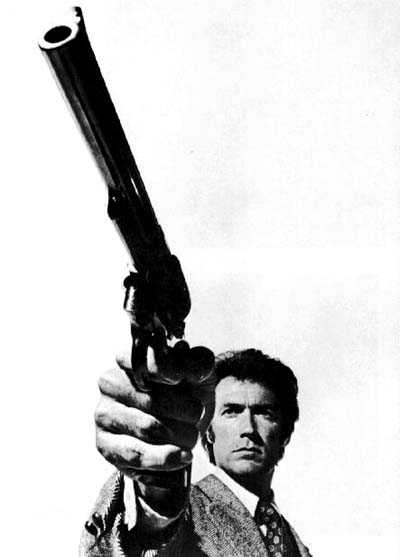
And in 1985 we get Rambo:First Blood Part II (found here), a military revenge fantasy in which a Vietnam vet gets to finish the war the U.S. military wasn’t “allowed” to win, presumably because of weak, feminized elements that controlled the government. Stallone’s body is huge and muscular, and the gun has gotten larger and more deadly.
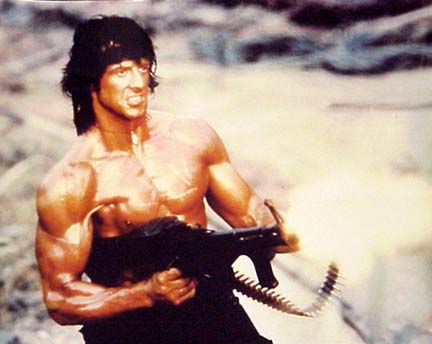
Katz attributes these changes in images of masculinity to a growing concern in U.S. culture that we are somehow being “feminized” and becoming weak. He argues that the loss in Vietnam (or lack of an outright win, if you prefer) as well as political and economic gains by women and non-whites caused a cultural panic about the status of white men. As these men were supposedly losing power and status in everyday life, cultural images of them emphasized strength, power, and aggression as a version of ideal masculinity.
Here is a clip from Tough Guise:
And here’s a clip that takes the Tough Guise intro but adds some other images:
I was thinking about this because when I was in Oklahoma, I was around a lot of trucks, and specifically, a lot of old farm trucks. And one day when I was standing next to an old Dodge Ram, it hit me how much less…I don’t know…imposing it was than newer trucks. It seemed like a cute little toy truck. Here’s a picture of a 1985 Dodge Ram (found here):

The 2005 version of the Dodge Ram (found here):
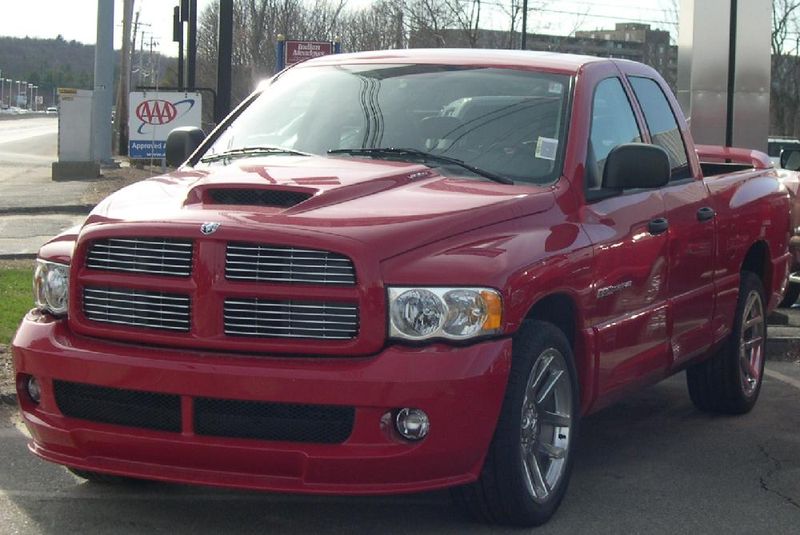
Looking at my family’s old farm trucks (and we’ve got a collection of rotting, rusting trucks dating from the 1950s on; I did not post pictures of our trucks because my grandma would kill me for exposing our farm junkiness to the world), I kept thinking, “We used to haul cattle with that?” or “That was considered sufficiently masculine at one point?” And the answer is, yes. Yes, they were.
Now, I’m certain that a lot of the redesigns had to do with advances in safety and efforts to improve fuel efficiency (by making the truck body more rounded, for instance). But there also seems to be a pattern in trucks today to design their headlights and grills to look sort of “mean,” if you will–like they’re snarling or growling.
I’m not necessarily saying there’s a connection between Katz’s work and the way trucks have been redesigned to look meaner and more aggressive…but it just got me thinking.
Of course, as a farm kid, what strikes me about trucks is the way the newer designs make them less functional for the types of things you see people doing in truck ads. While the cabs have gotten larger, making room for more passengers (that is, more like a car), the beds have gotten smaller, so you can’t carry as much (or as long of) stuff in them–and carrying stuff in the back is what you supposedly need a truck for. Yes, you can still stick more stuff in the back of, say, a new Dodge Ram than in a lot of cars, but I’m just sayin’. (Also, you’d be shocked at how much stuff I can get in the back of a Honda Civic if I lay the seat down and am really motivated. And my mom once brought a 130-pound calf home in the backseat of a car–I had the fun job of trying to keep him from attempting to crawl into the front. And we had a woman in my hometown who used to haul pigs around in the backseat of her Caddy.) A lot of things we used to haul around in the back of our trucks wouldn’t fit in the beds of new trucks, or you couldn’t fit nearly as much of them. And of course the majority of people who buy trucks for their big motors aren’t doing the types of things (driving through extremely rocky or muddy country, hauling trailers full of cattle, etc.) that require such a huge motor in the first place. So why not just buy a car?
Just some thoughts that struck me while hanging out on the farm.
On-the-road post from Flagstaff, AZ:
The other day I was standing in a salon and noticed some styling products by Redken for Men. I realized they provide an excellent example of how, when companies try to convince men to buy things traditionally reserved for women (and thus marked feminine), they have to masculinize them. This is particularly true when it comes to beauty products, since men aren’t supposed to worry about things like their skin.
On the Redken website, the products are described as, “Focused technology for stronger hair and balanced scalp.” I’m not sure I’ve ever bought mousse or shampoo described to me as technology before. Notice how the names of these styling products attempt to make them seem manly:
Grip Tight gel.
Men maneuver things, like high-end cars and power tools. And their hair.
Don’t take dandruff lying down! Retaliate!
Tough = masculine.
Men work hard. So does their molding paste.
Bulk Up!
Be smarter and sportier than your hair.
Redken for Men’s gray-hair-covering service is not dye, it’s Color Camo.
It might be useful to compare images of products like these with this verse from the currently-popular country song “I’m Still a Guy,” by Brad Paisley:
These days there’s dudes getting facials
Manicured waxed and botoxed
But with deep spray on tans and creamy lotioney hands
You can’t grip a tackle box
With all of these men lining up to get neutered
It’s hip now to be feminized I don’t highlight my hair
I’ve still got a pair
Yeah, honey I’m still a guy
My eyebrows ain’t plucked
Theres a gun in my truck
Thank God I’m still a guy
I’ve driven from Vegas to Oklahoma and nearly back in the last 10 days. I’ve heard this song several times now.
Anyway, this could be good for a discussion of changing ideals of masculinity (and the idea of the metrosexual) or the gendering of products into men’s and women’s versions even though they’re really the same.
See also Touch of Gray hair dye and another set of beauty products for men.
In the comments, pharmacopaeia mentioned that the New Zealand salon Manscape caters to men and has to work to masculinize its services and products (starting with the name, obviously). Their tagline is “taking the ape out of the modern man.” They also offer clients cold beers while they get beautified. They offer a sports massage, “perfect for pre and post event training.” They reassure men about the eyebrow maintenance service by saying “Shape & tidy – there’s nothing girly about this!” The manicure (Man-I-Cure) is called Handy Work, and the pedicure is described as “manly.”
Thanks for letting us know, p.!
NEW: Here’s another example I found in Rolling Stone, which tells men to take charge of their hair:
Cory D. sent us these pictures of gendered T-shirts for kids at Disneyland (see them here).
T-shirt text: “I rode [the Pirates of the Caribbean ride] and I spun around in a [teacup]. I ate some [ice cream] and yummy [popcorn]. But the best part of my trip is when I met [Goofy, er Pluto].”
T-shirt text: “I rode [the Carousel]. I saw [Cinderella] and went to her [castle]. I spun in a [teacup] and I ate [ice cream]. But the best part of my trip is when I met [The Little Mermaid].”
Maybe you’ve never noticed, given that feminists are always talking about the ladies, that there are lots and lots and lots of things that (real) men are not supposed to do. For instance: drink fruity drinks, wear pink shoes, look at their fingernails the wrong way, enjoy a “chick flick,” like a girl, like cats, prefer not to fight, care about grades, eat salad… should I go on? You get the gist.
Comparably, women have got it good. We’re allowed to knit and play soccer, be a mom and be a lawyer, take dance and karate, wear skirts and pants!
How do we make sense of this? Crash course: Femininity is just for chicks. When men do feminine things, they are debasing themselves. Masculinity is awesome and for everyone. When women do masculine things, they’re awesome. This is sexism: Masculinity rules, femininity drools. Men are encouraged to stay away from femininity, so their individual choices are constrained, but they also are staying away from something debasing. In contrast, women are required to do a least some femininity, so women are required to debase themselves, at least a little bit, even as they are given more options.
I say this all to introduce these two hilarious examples of men and how they have to worry about doing masculinity (sent in by Vesko J.).
How To Give The Perfect Man Hug
How I Sit On The Bus
Lisa Wade, PhD is an Associate Professor at Tulane University. She is the author of American Hookup, a book about college sexual culture; a textbook about gender; and a forthcoming introductory text: Terrible Magnificent Sociology. You can follow her on Twitter and Instagram.
Miguel pointed out that AskMen.com collected a list of “worst male-bashing ads,” all of which represent men as morons or useless oafs. Here are some of them:
1st for Women, a South African auto insurance company that only insures women:
A Domino’s ad in which the wife laughs at her husband’s sexual overtures:
A Sony Cyber-shot ad that depicts men as a horse’s ass (it’s the first clip; for some reason there are some FedEx clips afterward):
Men as easily manipulated by flirty women:
These might be useful for a discussion of masculinity and portrayals of men as idiots and morons, especially regarding family life, which serves to reinforce the idea that men can’t be trusted to cook or clean or care for children because they’ll just mess it up. Although it doesn’t come up in these ads, it’s also good to bring in the class element we see in shows like “King of Queens,” “The Simpsons,” “According to Jim,” and “Married with Children,” which all have working-class, generally pot-bellied idiot husbands married to smart, gorgeous women who sigh and put up with their childish behavior.
Also see the earlier post of a Roomba ad that portrays the husband as a literal ass (this ad also made it into the AskMen list).
Thanks, Miguel!
Gwen Sharp is an associate professor of sociology at Nevada State College. You can follow her on Twitter at @gwensharpnv.
Dawn A. sent us these posters for The Sarah Connor Chronicles. Notice how, in three out of four posters, the women are not making eye-contact and, in all of them, they are in a passive pose with a passive facial expression. Dawn adds:
I’m alarmed by the disembodiment of the character. While she may be a part of the Terminator series, would we ever see Arnold Schwarzenegger (or other male characters) portrayed like this in posters?
Thanks Dawn!
NEW: After a discussion with my friend Jason, I decided to offer some more images and commentary as food for thought.
Here are the Terminator posters I could find featuring Schwartzenegger. There are a lot of things separating and potentially separating these posters from those above other than gender: about 20 years, maybe the moral of the movies/series or the feeling of the show, and surely producers/directors etc. Even so, I think it’s worth putting up the images for contrast.

Back to The Sarah Connor Chronicles: Below are some additional promotional images that do not reproduce the passivity we see in the first set. Word on the street is (or so I have heard some people say), the women are not as feminized in the series as they are in the promotional material (which, if true, is interesting in itself).





Still, Jason notes that the empowerment of the women in the series as protectors, comes at the cost of disempowering John Connor and that disempowerment is achieved, in part, through his feminization. His task, then, as the series progresses, is to finally become a “man.” At that point, supposedly, he would no longer need the protection of women.
So, femininity is still associated with weakness. And, insofar as femininity is equated with weakness, and women are more-or-less required to do at least some femininity (lest they be called “dykes” or “bitches”), women are more-or-less required to appear at least a little bit weak in their daily lives.

In a recent post I discussed ways in which companies market beauty products to men, who traditionally aren’t supposed to worry about things like their pores. Here are a couple more examples.
Axe has a body scrubber for men (pointed out by akamarkman):

To differentiate it from girly body scrubbers, it’s called the Axe Detailer Shower ToolAxe Shower Scrub (or body wash, if you’re female) comes in varieties including Snake Peel, Skin Contact, and Glacier Water (scroll a little less than halfway down to see the varieties).
Here is an ad for the Detailer Shower Tool that shows a man being treated like a car in a car wash (cleaned by futuristically-attired women):
Gillette 2-in-1 Body Wash helps men prevent skin dehydration. And that helps them get hot girls at work:
This Gillette ad tells men to unleash “power” to “defeat dry skin:
Notice how buff he is. We also learn that this body wash is a “hydrator” (not a moisturizer) and that it’s “high-performance” to provde a “powerful defense” that leaves you with the sense you “can take on the world.” So macho!
Andrew F. sent in a link to a post at DirectDaily about the Axe Schedule ad. In it, we see that a set of dorm rooms is overlaid with a calendar, the idea being that you get a different girl each day:

Gwen Sharp is an associate professor of sociology at Nevada State College. You can follow her on Twitter at @gwensharpnv.
CORRECTION/CLARIFICATION: I am reposting this because I want to make clear that a couple of things that people picked up on in the comments are MY mistakes/confusing wording, not Jackson Katz’s. First, in regards to the Rambo movies, I was confusing Rambo:First Blood Par I, which came out in 1982, with Rambo:First Blood Part II, which came out in 1985, which is what Katz is quoting in the movie. I just googled the movie to find the year it came out and didn’t notice it was for Part I, not Part II. I have corrected that below.
As for the Terminator image, that is entirely my fault. I could not find the exact image Katz used in the documentary, though I searched for quite a while. I just put up an image I meant to be representative of both Terminator movies, and the one I used, as the commenters point ou, was not a good example of what I was saying. Since I can’t find the image Katz used, I have taken the Terminator image out of the post.
I just wanted to a) correct those two things and b) make it clear that they were my mistakes, not Katz’s.
*****
In the documentary Tough Guise: Violence, Media & the Crisis in Masculinity, Jackson Katz discusses how images of masculinity in pop culture have changed over time, and particularly how in the 1980s and 1990s images of male heroes got larger and more menacing, as well as hyper-violent. He uses Humphrey Bogart, Clint Eastwood, Sylvester Stallone, and Arnold Schwarzenegger as examples. I’m basing my discussion of the images from movies on Katz’s analysis.
In this image of Humphrey Bogart (found here) in The Maltese Falcon (1941), his gun is very small compared to his body. His body language is not particularly imposing or threatening. Keep in mind this was during World War II (though the U.S. had not joined yet) and that machine guns had been invented during the Civil War. So Humphrey Bogart conceivably could have been shown holding some sort of automatic weapon instead of a small handgun.

Then we have Clint Eastwood in Dirty Harry, from 1971 (found here). The gun has gotten much bigger and the body posture a bit more threatening.

And in 1985 we get Rambo:First Blood Part II (found here), a military revenge fantasy in which a Vietnam vet gets to finish the war the U.S. military wasn’t “allowed” to win, presumably because of weak, feminized elements that controlled the government. Stallone’s body is huge and muscular, and the gun has gotten larger and more deadly.

Katz attributes these changes in images of masculinity to a growing concern in U.S. culture that we are somehow being “feminized” and becoming weak. He argues that the loss in Vietnam (or lack of an outright win, if you prefer) as well as political and economic gains by women and non-whites caused a cultural panic about the status of white men. As these men were supposedly losing power and status in everyday life, cultural images of them emphasized strength, power, and aggression as a version of ideal masculinity.
Here is a clip from Tough Guise:
And here’s a clip that takes the Tough Guise intro but adds some other images:
I was thinking about this because when I was in Oklahoma, I was around a lot of trucks, and specifically, a lot of old farm trucks. And one day when I was standing next to an old Dodge Ram, it hit me how much less…I don’t know…imposing it was than newer trucks. It seemed like a cute little toy truck. Here’s a picture of a 1985 Dodge Ram (found here):

The 2005 version of the Dodge Ram (found here):

Looking at my family’s old farm trucks (and we’ve got a collection of rotting, rusting trucks dating from the 1950s on; I did not post pictures of our trucks because my grandma would kill me for exposing our farm junkiness to the world), I kept thinking, “We used to haul cattle with that?” or “That was considered sufficiently masculine at one point?” And the answer is, yes. Yes, they were.
Now, I’m certain that a lot of the redesigns had to do with advances in safety and efforts to improve fuel efficiency (by making the truck body more rounded, for instance). But there also seems to be a pattern in trucks today to design their headlights and grills to look sort of “mean,” if you will–like they’re snarling or growling.
I’m not necessarily saying there’s a connection between Katz’s work and the way trucks have been redesigned to look meaner and more aggressive…but it just got me thinking.
Of course, as a farm kid, what strikes me about trucks is the way the newer designs make them less functional for the types of things you see people doing in truck ads. While the cabs have gotten larger, making room for more passengers (that is, more like a car), the beds have gotten smaller, so you can’t carry as much (or as long of) stuff in them–and carrying stuff in the back is what you supposedly need a truck for. Yes, you can still stick more stuff in the back of, say, a new Dodge Ram than in a lot of cars, but I’m just sayin’. (Also, you’d be shocked at how much stuff I can get in the back of a Honda Civic if I lay the seat down and am really motivated. And my mom once brought a 130-pound calf home in the backseat of a car–I had the fun job of trying to keep him from attempting to crawl into the front. And we had a woman in my hometown who used to haul pigs around in the backseat of her Caddy.) A lot of things we used to haul around in the back of our trucks wouldn’t fit in the beds of new trucks, or you couldn’t fit nearly as much of them. And of course the majority of people who buy trucks for their big motors aren’t doing the types of things (driving through extremely rocky or muddy country, hauling trailers full of cattle, etc.) that require such a huge motor in the first place. So why not just buy a car?
Just some thoughts that struck me while hanging out on the farm.
On-the-road post from Flagstaff, AZ:
The other day I was standing in a salon and noticed some styling products by Redken for Men. I realized they provide an excellent example of how, when companies try to convince men to buy things traditionally reserved for women (and thus marked feminine), they have to masculinize them. This is particularly true when it comes to beauty products, since men aren’t supposed to worry about things like their skin.
On the Redken website, the products are described as, “Focused technology for stronger hair and balanced scalp.” I’m not sure I’ve ever bought mousse or shampoo described to me as technology before. Notice how the names of these styling products attempt to make them seem manly:
Grip Tight gel.
Men maneuver things, like high-end cars and power tools. And their hair.
Don’t take dandruff lying down! Retaliate!
Tough = masculine.
Men work hard. So does their molding paste.
Bulk Up!
Be smarter and sportier than your hair.
Redken for Men’s gray-hair-covering service is not dye, it’s Color Camo.
It might be useful to compare images of products like these with this verse from the currently-popular country song “I’m Still a Guy,” by Brad Paisley:
These days there’s dudes getting facials
Manicured waxed and botoxed
But with deep spray on tans and creamy lotioney hands
You can’t grip a tackle box
With all of these men lining up to get neutered
It’s hip now to be feminized I don’t highlight my hair
I’ve still got a pair
Yeah, honey I’m still a guyMy eyebrows ain’t plucked
Theres a gun in my truck
Thank God I’m still a guy
I’ve driven from Vegas to Oklahoma and nearly back in the last 10 days. I’ve heard this song several times now.
Anyway, this could be good for a discussion of changing ideals of masculinity (and the idea of the metrosexual) or the gendering of products into men’s and women’s versions even though they’re really the same.
See also Touch of Gray hair dye and another set of beauty products for men.
In the comments, pharmacopaeia mentioned that the New Zealand salon Manscape caters to men and has to work to masculinize its services and products (starting with the name, obviously). Their tagline is “taking the ape out of the modern man.” They also offer clients cold beers while they get beautified. They offer a sports massage, “perfect for pre and post event training.” They reassure men about the eyebrow maintenance service by saying “Shape & tidy – there’s nothing girly about this!” The manicure (Man-I-Cure) is called Handy Work, and the pedicure is described as “manly.”
Thanks for letting us know, p.!
NEW: Here’s another example I found in Rolling Stone, which tells men to take charge of their hair:
Cory D. sent us these pictures of gendered T-shirts for kids at Disneyland (see them here).
T-shirt text: “I rode [the Pirates of the Caribbean ride] and I spun around in a [teacup]. I ate some [ice cream] and yummy [popcorn]. But the best part of my trip is when I met [Goofy, er Pluto].”
T-shirt text: “I rode [the Carousel]. I saw [Cinderella] and went to her [castle]. I spun in a [teacup] and I ate [ice cream]. But the best part of my trip is when I met [The Little Mermaid].”
Maybe you’ve never noticed, given that feminists are always talking about the ladies, that there are lots and lots and lots of things that (real) men are not supposed to do. For instance: drink fruity drinks, wear pink shoes, look at their fingernails the wrong way, enjoy a “chick flick,” like a girl, like cats, prefer not to fight, care about grades, eat salad… should I go on? You get the gist.
Comparably, women have got it good. We’re allowed to knit and play soccer, be a mom and be a lawyer, take dance and karate, wear skirts and pants!
How do we make sense of this? Crash course: Femininity is just for chicks. When men do feminine things, they are debasing themselves. Masculinity is awesome and for everyone. When women do masculine things, they’re awesome. This is sexism: Masculinity rules, femininity drools. Men are encouraged to stay away from femininity, so their individual choices are constrained, but they also are staying away from something debasing. In contrast, women are required to do a least some femininity, so women are required to debase themselves, at least a little bit, even as they are given more options.
I say this all to introduce these two hilarious examples of men and how they have to worry about doing masculinity (sent in by Vesko J.).
How To Give The Perfect Man Hug
How I Sit On The Bus
Lisa Wade, PhD is an Associate Professor at Tulane University. She is the author of American Hookup, a book about college sexual culture; a textbook about gender; and a forthcoming introductory text: Terrible Magnificent Sociology. You can follow her on Twitter and Instagram.
Miguel pointed out that AskMen.com collected a list of “worst male-bashing ads,” all of which represent men as morons or useless oafs. Here are some of them:
1st for Women, a South African auto insurance company that only insures women:
A Domino’s ad in which the wife laughs at her husband’s sexual overtures:
A Sony Cyber-shot ad that depicts men as a horse’s ass (it’s the first clip; for some reason there are some FedEx clips afterward):
Men as easily manipulated by flirty women:
These might be useful for a discussion of masculinity and portrayals of men as idiots and morons, especially regarding family life, which serves to reinforce the idea that men can’t be trusted to cook or clean or care for children because they’ll just mess it up. Although it doesn’t come up in these ads, it’s also good to bring in the class element we see in shows like “King of Queens,” “The Simpsons,” “According to Jim,” and “Married with Children,” which all have working-class, generally pot-bellied idiot husbands married to smart, gorgeous women who sigh and put up with their childish behavior.
Also see the earlier post of a Roomba ad that portrays the husband as a literal ass (this ad also made it into the AskMen list).
Thanks, Miguel!
Gwen Sharp is an associate professor of sociology at Nevada State College. You can follow her on Twitter at @gwensharpnv.
Dawn A. sent us these posters for The Sarah Connor Chronicles. Notice how, in three out of four posters, the women are not making eye-contact and, in all of them, they are in a passive pose with a passive facial expression. Dawn adds:
I’m alarmed by the disembodiment of the character. While she may be a part of the Terminator series, would we ever see Arnold Schwarzenegger (or other male characters) portrayed like this in posters?
Thanks Dawn!
NEW: After a discussion with my friend Jason, I decided to offer some more images and commentary as food for thought.
Here are the Terminator posters I could find featuring Schwartzenegger. There are a lot of things separating and potentially separating these posters from those above other than gender: about 20 years, maybe the moral of the movies/series or the feeling of the show, and surely producers/directors etc. Even so, I think it’s worth putting up the images for contrast.

Back to The Sarah Connor Chronicles: Below are some additional promotional images that do not reproduce the passivity we see in the first set. Word on the street is (or so I have heard some people say), the women are not as feminized in the series as they are in the promotional material (which, if true, is interesting in itself).





Still, Jason notes that the empowerment of the women in the series as protectors, comes at the cost of disempowering John Connor and that disempowerment is achieved, in part, through his feminization. His task, then, as the series progresses, is to finally become a “man.” At that point, supposedly, he would no longer need the protection of women.
So, femininity is still associated with weakness. And, insofar as femininity is equated with weakness, and women are more-or-less required to do at least some femininity (lest they be called “dykes” or “bitches”), women are more-or-less required to appear at least a little bit weak in their daily lives.


